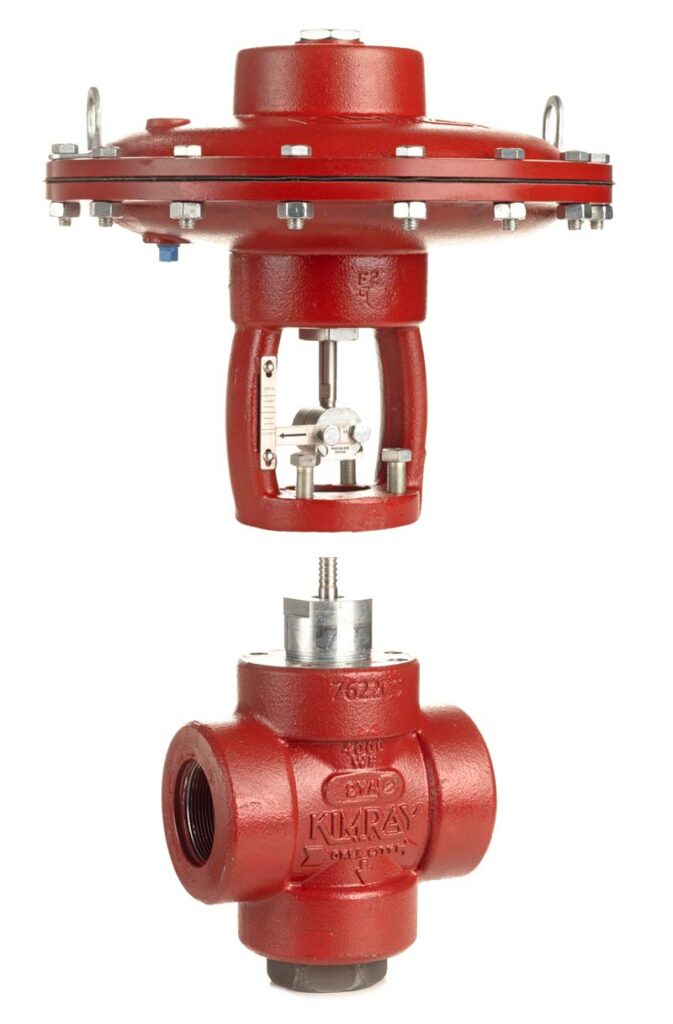“What Is Actuated Valve? Working Principle & Types.” This post aims to answer this question. So, if you want to read an in-depth article on this topic, read this post till the end.
An actuated valve is operated by a mechanical device that requires a power source to function. Some possible power sources are manual, electric, pneumatic (compressed air), hydraulic (oil flow), and spring. Actuators can either be linear or rotary.
There is a lot of information regarding actuated valves on Linquip’s website that will help you inform yourself about them before making a purchase so that you can pick out the product and service that is best suited to your needs. Whenever you require any information regarding actuated valve services or products, Linquip is the most suitable option for you. We at Linquip are always available to answer any questions you have about these pieces of equipment. Our recommendation is for you to read Linquip’s article titled, “What is an Actuator Valve? Working Principle and Function?“.
The Linquip platform has many components, and if you wish to get the most out of them, you will need to register as a Linquip Expert. By creating an account with Linquip, you will be able to showcase your expertise in industrial equipment in a way that suits the needs of the industry. Do you want to contribute a guest post to the Linquip website? With the Linquip platform, you can post your content directly to the site by using the Guest Posting feature.
⇒ View a List of Actuator Valves for Sale and Their Suppliers ⇐
Basics of Actuated Valves
Actuated valves are those with mechanisms to open and close in response to an opening or closing action. A manually operated valve requires someone to operate it by using a direct or geared mechanism attached to the valve stem. On the other hand, power-driven actuators are driven by gas, hydraulic, or electric pressure, which makes it possible to operate large valves quickly and remotely.
Often, the last stage in an automated process can be the use of power-operated actuators that control the flow, the level, or another process. There are different types of actuators available, such as those that are required only for opening and closing the valve and those that permit intermediate positioning, as well as those that can be used for remotely indicating the position of the valve.
All types of process plants use actuated valves, particularly those involving automation. They are used in wastewater treatment plants, power plants, refineries, mining, and nuclear plants, as well as food factories. Actuated valves play an essential role in process automation. Automatic valves are available in a variety of sizes and designs. There are actuated valves with diameters ranging from one-tenth of an inch to several feet.
Different industries use actuated valves for a variety of purposes, including:
Open-Close
If a valve is being used as a shut-off valve, it will either be open or closed and no intermediate positions will be maintained.
Positioning
A static flow through the pipeline is also established using intermediate positions. The running time of the pipeline is also limited, as with open-close duty.
Modulating
Closed-loop applications are characterized by the need for their actuators to be adjusted frequently in response to changing conditions, such as to set the desired flow rate. These applications need to be adjusted every few seconds. Compared to an opening-closing or positioning device, a power actuator faces greater demands. Actuators must be designed so that high numbers of starting actuators do not affect control accuracy.
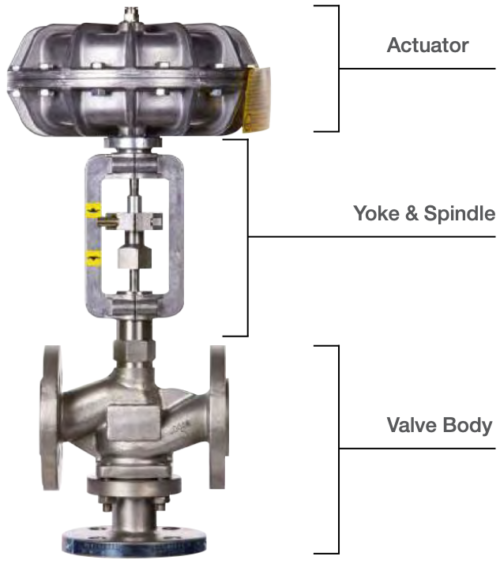
Working Principle of Actuated Valves
The operating principles of actuated valves differ depending on their actuation mechanisms.
Linear Actuator
Linear actuators operate valves that can be opened and closed by linear force. Such valves are sometimes referred to as “rising stem” valves. This principle applies to globe valves, gate valves, rising stem ball valves, and control valves. There are two types of linear actuators: pistons and diaphragms.
Diaphragm Actuator
A diaphragm actuator is a piece of rubber positioned around the edge of a cylinder or chamber, allowing air pressure to enter from both sides, pushing the rubber either forward or backward. There is a rod that is attached to the center of the diaphragm so that it can move when pressure is applied. The rod is connected to the stem of the valve so that the valve can move linearly. By moving linearly, the valve can either open or close.
It can be safely assumed that diaphragm actuators are suitable for moderate pressures when the valve travel and thrust requirements of the valve are low.
Piston Actuator
A piston actuator uses a piston that moves along the length of the cylinder to operate. As a result of the piston’s movement, it transfers the force applied by the piston to the valve stem. The piston actuator offers some advantages over the diaphragm actuator in terms of pressure, travel distance and thrust force.
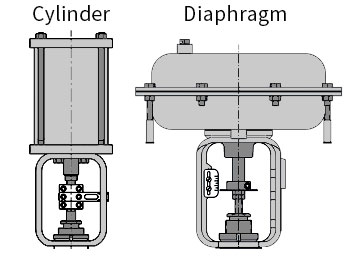
Spring-Based Actuator
The use of spring provides a defined behavior when there is no power. In many cases, this is a driving force behind specifications and is of paramount importance when it comes to safety incidents. An air compressor (which is used to provide the compressed air that the actuator uses to move) may shut down, resulting in a loss of power. It is a spring inside the actuator that opens or closes the valve and holds it open or closed until the power has been restored again.
In order to describe the operation of an actuator, the term “fail open” or “fail close” may be used. Without a backup power source, an actuator will remain stationary during a power outage.
A typical example of a valve that can be automated is the plug-type control valve. Using a similar motion to the manner in which a plug in a bathtub is pushed into the drain, a stroke movement presses a plug into the plug seat in a plug holder. It is imperative that the thrust unit delivers the same amount of thrust in order to hold and move the plug against the medium pressure.
Types of Actuated Valves
A variety of factors are taken into consideration when selecting valve actuators, including torque required for operation and automation. The most common types of actuators are manual handwheels, manual levers, electrical motors, pneumatics, solenoids, hydraulic pistons, and self-actuated ones. With the exception of manual levers and handwheels, all actuators can be fitted with automatic actuation.
In order to operate an actuated valve, a power source is required. The power source can be one of the following:
Manual-Actuated Valves
Using levers, gears, or wheels, the manual actuator moves the valve stem. They are operated by hand. A manual actuator is usually easy to operate, costs less, and is self-contained. The problem is that there are many large valves that cannot be operated manually, and some of those valves are located in remote locations, hazardous environments, or hostile environments where they are unable to be operated manually.
Occasionally, a valve’s closing needs to be more rapid than can be handled by a manually operated actuator for safety reasons.
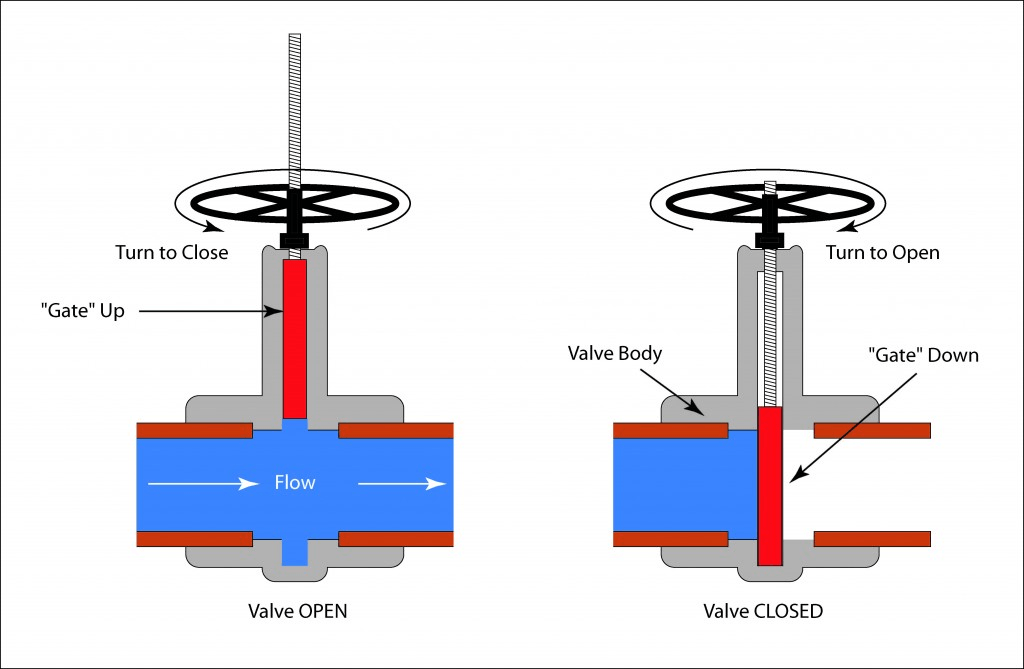
With manual actuators, the valve can be placed in any position but cannot be automatically operated. Handwheels are the most commonly used mechanical actuators. In this category handwheels fixed to stems, hammer-type handwheels and handwheels are connected to stems through gears.
Handwheels Fixed to Stem
The handwheel attached to the stem provides only a mechanical advantage. High operating temperatures cause these valves to bind and make operation difficult.
Hammer Handwheel
During a portion of the wheel’s turn, the hammer handwheel moves freely, and then a lug on the secondary wheel gets in the way. This secondary wheel is connected to the valve stem. It is possible to pound the valve shut for tight closure or pound it open if it is stuck closed.
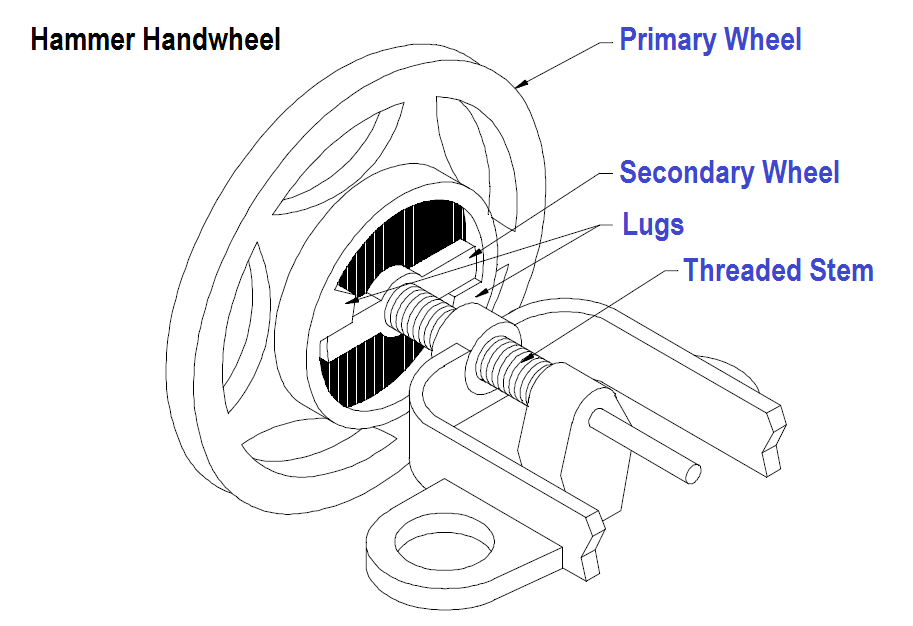
Manually-Operated Gearbox
In order to increase the mechanical advantage of manually operated valves, it is possible to fit the valve bonnet with manually operated gears. An attached wrench or handwheel enables one individual to operate the valve when two are required without taking advantage of the gear advantage.
In large valves, the operating time is extraordinarily long because the valve stem must be turned several times in order for one turn of the pinion to be created. A portable air motor connected to the valve pinion shaft reduces the valve’s operational time.
Pneumatic-Actuated Valves
Air (or other gases) pressure is used to power pneumatic valve actuators. Compressed, dry, and clean air can be used to power pneumatic actuators. In some types of regulators, such as compressed gas regulators, the supply pressure comes from the process gas flow, and the waste gas is vented into the atmosphere or dumped into lower-pressure systems. Quarter-turn or linear valves can be operated with pneumatic actuators.
Automated or semi-automatic valve operation is possible with pneumatic actuators. The actuators convert air signals into valve stem motion by applying pressure to a diaphragm or piston attached to the stem. Automatic operations are achieved when circuitry is used to control air signals. A semi-automatic operation is implemented by means of a manual switch in the installation of the circuitry to the air control valves.
In throttle valves requiring fast action, pneumatic actuators are used for open-close positioning.
By applying air pressure to a piston or bellows diaphragm, a linear force is applied to a valve stem. It is possible to operate a quarter-turn valve by producing torque using a quarter-turn vane actuator. Pneumatic actuators that are spring-closed or spring-opened are moved by applying air pressure to overcome the springs.
The air is applied at different inlets in a “double-acting” actuator for the valve to open or close.
Direct-acting actuators are defined as those that are closed by air pressure and opened by spring action. On the other hand, a reverse-acting actuator is one that opens the valve with air pressure and closes it with spring action.
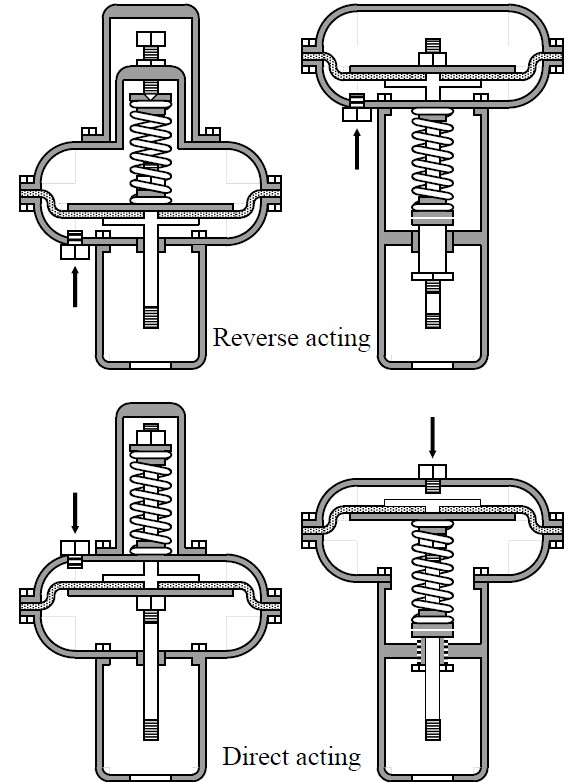
Hydraulic-Actuated Valves
Fluid pressure is translated into motion by hydraulic actuators. Hydraulic fluid can either be water or oil. In the same way as pneumatic actuators, they are used for linear valves as well as quarter-turn valves. For gate valves and globe valves, linear thrust is generated by the fluid pressure which acts on the piston. A quarter-turn actuator applies rotary motion to a quarter-turn valve.
With hydraulic actuators, fail-safe mechanisms are available that will automatically open or close the valve in an emergency. Hydraulic pressure can be generated by a self-contained pump. Hydraulic pressure can be produced by processing fluids in applications like water pumping stations, provided the actuators are compatible with the fluid.
Similar to pneumatic actuators, hydraulic actuators provide semi-automatic or automatic valve positioning. By means of a piston, these actuators convert a signal pressure into a valve stem movement. A hydraulic fluid is fed into either side of the piston, and the other side of the piston is drained or bled.
Typically, solenoid valves serve as an automatic control device that directs hydraulic fluid to open or close a valve. You can also use manual valves to control hydraulic fluid, thereby providing semi-automatic operation.
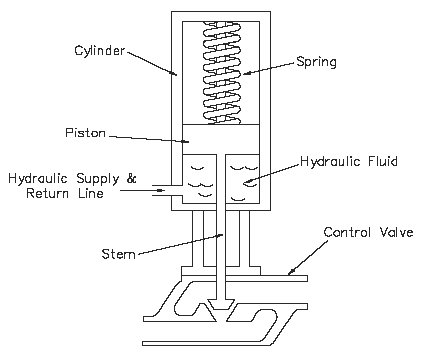
Electric-Actuated Valves
An electric actuator drives a valve by using an electric motor. They are non-toxic, energy-efficient, and quiet. Nonetheless, electricity availability is not always guaranteed, which can create a problem. Batteries can also be used to power them.
Valves powered by electric motors can be operated manually, semi-automatically and automatically. In the majority of cases, motors are used for open-close functions, but they are also able to position the valve at any arbitrary opening.
In most cases the motor is reversible and high-speed, connected via a gear train, thus reducing the speed of the motor enough to increase the torque at the stem. The direction of disk rotation depends on the rotation direction of the motor.
Semi-automatic electrical actuation is possible, for example, when a control system starts the motor. The valve can be operated manually through a handwheel that can be engaged to the gear train. A limit switch stops the motor automatically when the valve is fully opened or fully closed. Limit switches are activated either physically by placing the valve in the desired position, or torsionally by torque on the motor.
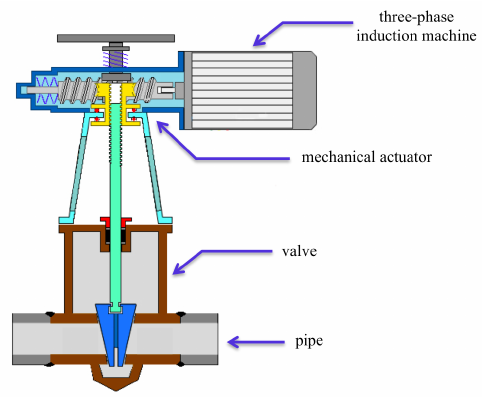
Spring-Actuated Valves
actuators hold a spring in place. Upon the occurrence of a single anomalous event, or when the power goes out, the spring is released, and the valve is operated. They are intended for one-time use, such as emergencies since these devices cannot be re-set after use. They can be operated by limited battery power or automatically after a power outage since they are not dependent on an electric supply.
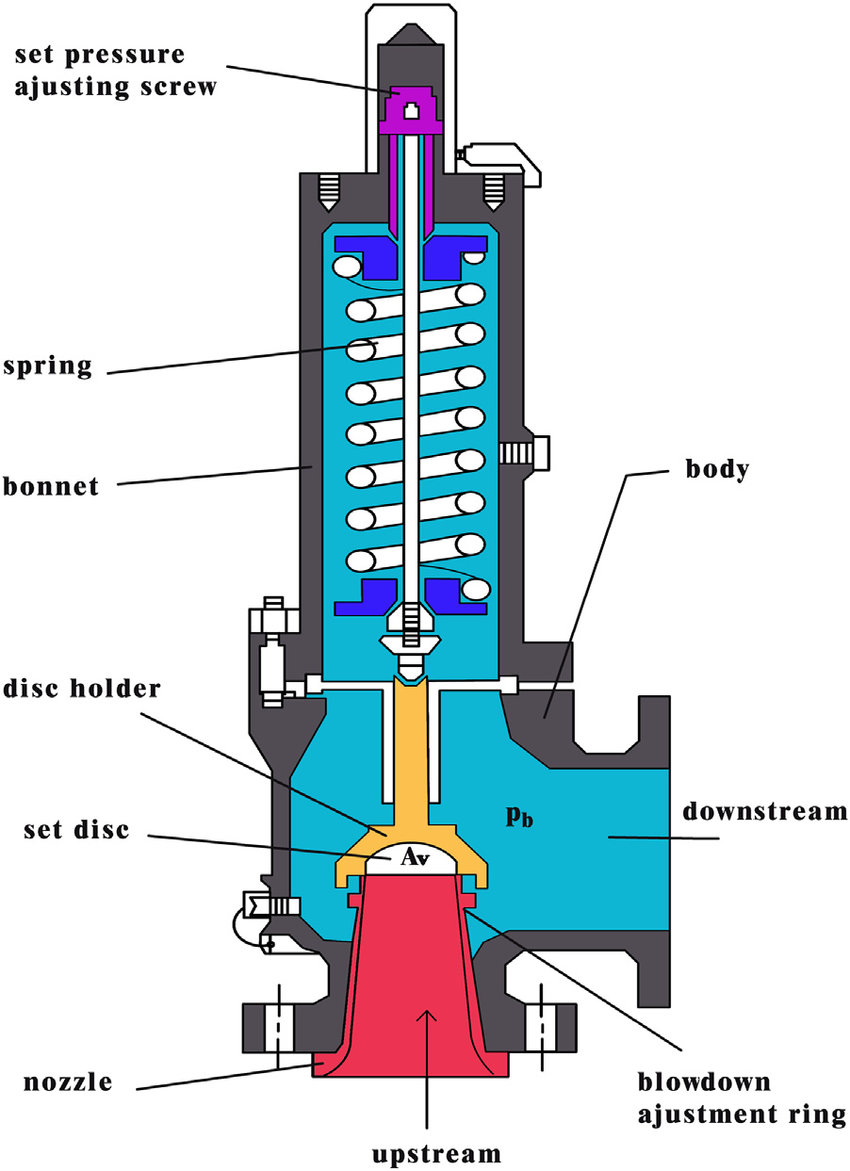
Self-Actuated Valves
Self-actuated valves rely on system fluid to determine how to position the valve. Among the types of self-actuated valves are relief valves, safety valves, check valves, and steam traps. These valves are all controlled by some characteristic of the system fluid. For the operation of these valves, there is no need for an external source of power.
Solenoid-Actuated Valves
A solenoid-actuated valve allows for automatic opening and closing. For solenoid-actuated valves, there is also a manual override that allows manual positioning of the valve as long as the override is positioned manually. Using solenoids, the valve is positioned by attracting a magnetic slug connected to the stem. When power is applied to a single solenoid valve, spring pressure opposes the motion of the slug.
It is possible to set up these valves so that power to the solenoid opens and closes the valve. The spring returns the valve to its previous position when power is removed from the solenoid. There is the possibility of using two solenoids to provide both opening and closing by applying power to the appropriate solenoid.
When the solenoid is de-energized, single solenoid valves can either fail open or fail closed. By spring pressure, fail open solenoid valves are opened, and by energizing the solenoid, the valve is closed. A fail-closed solenoid valve closes by spring pressure and opens by energizing the solenoid.
Typically, a double solenoid valve fails “as it is.” With this, the valve position does not vary when both solenoids are de-energized.
The solenoid valve is commonly used in air supply systems, such as those used for pneumatic valve actuators. By controlling the air supply to the pneumatic actuator, the solenoid valves control the position of the pneumatic-actuated valve.
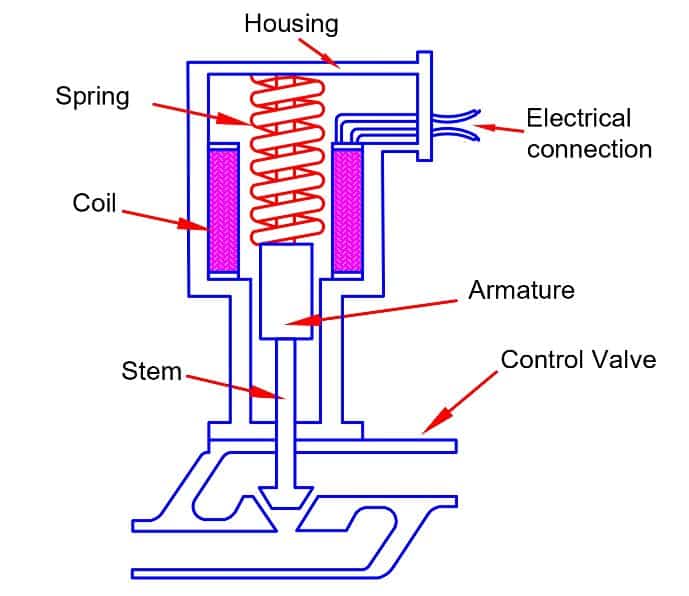
Valve Position Indication
For the knowledgeable operation of the plant, the position of certain valves must be indicated to the operators. These valves are equipped with remote valve position indicators, which indicate whether the valves are open or closed from a distance.
A position detector is used to detect stem and disk position or actuator position in remote valve position indication circuits. Mechanical limit switches, in which the valve is moved physically to detect position, are a type of position detector.
The second type of magnetic switch is a transformer or switch that detects changes in its magnetic core, allowing it to be operated by valve movement.
A local valve position indication is any visually discernible characteristic of the valve that indicates its position. The stem position indicates the position of the rising stem valve. Some non-rising stem valves are equipped with small mechanical pointers that are operated by the valve actuator together with the valve operation.
A mechanical pointer is usually used with power-actuated valves to provide local valve position indication. However, some valves have no indication of position.
Conclusion
Here is a summary of actuated valves:
- The most common kind of valve actuator is a manual valve actuator. Manual actuators may be attached directly to the valve stem or through gears to achieve mechanical advantage.
- In pneumatic actuators, air pressure is applied to one or both sides of a diaphragm in order to position the valve.
- In hydraulic actuators, pressurized liquid on one or both sides of a piston provides the force needed to position the valve.
- Electric actuated valves are powered by electric motors and contain reversible motors coupled to the valve stem through gear trains that reduce rotational speed and increase torque.
- In solenoid actuators, the valve stem is attached to a magnetic slug. The valve is positioned by magnetic attraction between the coil of the electromagnet in the valve actuator and the slug on the stem of the valve.
Download What Is Actuated Valve PDF
The following link will provide you with a PDF file of the entire content of this article. Simply click on the link and you will begin the download process.
Buy Equipment or Ask for a Service
By using Linquip RFQ Service, you can expect to receive quotations from various suppliers across multiple industries and regions.
Click Here to Request a Quotation From Suppliers and Service Providers
Read More on Linquip
- What is Air Valve? Working Principles & Types (Clear Guide)
- What is Solenoid Valve and How Does It Work? 2022 Guideline
- What is Automatic Expansion Valve: A Basic Guide
- Strainer Valve: a basic guide to know it better
- What is Balancing Valve? Working Principles,Types & Function
- What is Industrial Valves? Working Principles & Application
- What is Drain Valve? Working Principle, Types & Applications
- What are Coaxial Valves? Working Principles and Type
- What is Isolation Valve? Working Principle & Types
- What is Block Valve? Working Principle & Types
- Backwater Valves: Working Principles & Types

